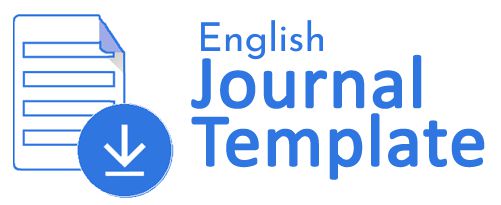Visual Attention Analysis of Perspective Images Using the Eye Tracking Method
DOI:
https://doi.org/10.34012/jurnalsisteminformasidanilmukomputer.v8i1.5133Abstract
In this research, eye tracking was applied to observe students' visual attention to three perspective images, each of which has a Region of Interest (RoI). In initial research, it was found that the majority of students faced difficulties in concentrating during the learning process. The aim of this research is to analyze the visual attention of perspective drawings in adolescents in an effort to increase learning concentration. Eye tracking was used as a research instrument to monitor the eye movements of 70 students objectively and in real-time who were guided by giving assignments to look for certain objects. This study showed that in terms of perception speed and focus duration, female participants outperformed male participants. However, overall the level of concentration of teenagers cannot be said to be good. These findings provide important knowledge for educators in creating more effective visual content to improve student concentration and understanding.
References
Blandfort, P., Karayil, T., Hees, J., & Dengel, A. (2020). The Focus–Aspect–Value model for predicting subjective visual attributes. International Journal of Multimedia Information Retrieval, 9(1), 47–60. https://doi.org/10.1007/s13735-019-00188-5
Colliot, T., & Jamet, É. (2018). Understanding the effects of a teacher video on learning from a multimedia document: an eye-tracking study. Educational Technology Research and Development, 66(6), 1415–1433. https://doi.org/10.1007/s11423-018-9594-x
Deangelis, J. W. (2018). An Eye-Tracking Investigation of Facial Affect Recognition in An Eye-Tracking Investigation of Facial Affect Recognition in Traumatic Brain Injury and Healthy Individuals Traumatic Brain Injury and Healthy Individuals. https://digitalcommons.montclair.edu/etd/126/
Forster, S., & Lavie, N. (2014). Distracted by your mind? Individual differences in distractibility predict mind wandering. Journal of Experimental Psychology: Learning Memory and Cognition, 40(1), 251–260. https://doi.org/10.1037/a0034108
Gaspar, P., Kompan, M., Simko, J., & Bielikova, M. (2018). Analysis of User Behavior in Interfaces with Recommended Items: An Eye-tracking Study. https://www.tobiipro.com/product-listing/tobii-pro-studio
Hahn, L., & Klein, P. (2022). Eye tracking in physics education research: A systematic literature review. Physical Review Physics Education Research, 18(1), 013102. https://doi.org/10.1103/PhysRevPhysEducRes.18.013102
Hailey Hoffman. (2018, May 6). Charles Darwin by Oleg Shuplyak. https://medium.com/@hhoffman/charles-darwin-by-oleg-shuplyak-ff68e3d22892
Harris, D., Arthur, T., Wilson, M., & Vine, S. (2023). Eye tracking for affective computing in virtual reality healthcare applications. 2023 11th International Conference on Affective Computing and Intelligent Interaction Workshops and Demos, ACIIW 2023. https://doi.org/10.1109/ACIIW59127.2023.10388102
Hidrėlėy. (2019, March 21). 35 Mind-Twisting Optical Illusion Paintings By Oleg Shuplyak. https://www.boredpanda.com/optical-illusion-paintings-oleg-shupliak/?media_id=1661366
Hristozova, N., Ozimek, P., & Siebert, J. P. (2018). Efficient Egocentric Visual Perception Combining Eye-tracking, a Software Retina and Deep Learning. http://arxiv.org/abs/1809.01633
Hwang, S. H., Lee, C.-M., & Chung, D. H. (2023). An Analysis on the Visual Attention of High School Students to Jeonbuk West Coast National Geopark Information Boards: Focusing on the Vocational High School Students. Korean Association For Learner-Centered Curriculum And Instruction, 23(7), 405–425. https://doi.org/10.22251/jlcci.2023.23.7.405
Jarodzka, H., Skuballa, I., & Gruber, H. (2021). Eye-Tracking in Educational Practice: Investigating Visual Perception Underlying Teaching and Learning in the Classroom. In Educational Psychology Review (Vol. 33, Issue 1). Springer. https://doi.org/10.1007/s10648-020-09565-7
Jiang, M., Chen, S., Yang, J., & Zhao, Q. (2020). Fantastic Answers and Where to Find Them: Immersive Question-Directed Visual Attention. 2020 IEEE/CVF Conference on Computer Vision and Pattern Recognition (CVPR), 2977–2986. https://doi.org/10.1109/CVPR42600.2020.00305
Kaminskiene, L., Horlenko, K., & Chu, L. Y. (2023). Applying Eye-Tracking Technology in the Field of Entrepreneurship Education. In FGF Studies in Small Business and Entrepreneurship (pp. 163–187). Springer Science and Business Media Deutschland GmbH. https://doi.org/10.1007/978-3-031-11371-0_8
Korobeynikova, L., Berejna, A., Korobeynikov, G., Danko, T., & Kostuchenko, V. (2022). Gender peculiarities of visual perception and information processing in wrestlers. Єдиноборства, 4(26), 25–33. https://doi.org/10.15391/ed.2022-4.03
Lindsay, G. W. (2020). Attention in Psychology, Neuroscience, and Machine Learning. Frontiers in Computational Neuroscience, 14. https://doi.org/10.3389/fncom.2020.00029
Quesque, F., Kambara, A., Van der Henst, J.-B., & Rossetti, Y. (2023). Learning from illusions: From perception studies to perspective-taking interventions. Neuroscience Research, 195, 9–12. https://doi.org/10.1016/j.neures.2023.05.003
Rob Gonsalves. (2018, July 8). Bedtime Aviation. Https://Www.Robgonsalves.Live/Painting-Bedtime-Aviation. https://www.robgonsalves.live/painting-bedtime-aviation
Sáiz-Manzanares, M. C., Marticorena-Sánchez, R., Martín-Antón, L. J., Almeida, L., & Carbonero-Martín, M. Á. (2023). Application and challenges of eye tracking technology in Higher Education. Comunicar, 31(76). https://doi.org/10.3916/C76-2023-03
Schweinberger, M., Watzka, B., & Girwidz, R. (2023). Eye tracking as feedback tool in physics teacher education. Frontiers in Education, 8. https://doi.org/10.3389/feduc.2023.1140272
Shi, Y., Yang, P., Lei, R., Liu, Z., Dong, X., Tao, X., Chu, X., Wang, Z. L., & Chen, X. (2023). Eye tracking and eye expression decoding based on transparent, flexible and ultra-persistent electrostatic interface. Nature Communications, 14(1), 1–12. https://doi.org/10.1038/s41467-023-39068-2
Sibanda, W., & Zhang, Z. (2018). Application of eye-tracking technology to predict concentration on HIV campaigns among students in South Africa. Proceedings of the 2018 IEEE/ACM International Conference on Advances in Social Networks Analysis and Mining, ASONAM 2018, 988–994. https://doi.org/10.1109/ASONAM.2018.8508415
Szekely, D., Vert, S., Rotaru, O., & Andone, D. (2023). Usability Evaluation with Eye Tracking: The Case of a Mobile Augmented Reality Application with Historical Images for Urban Cultural Heritage. Heritage, 6(3), 3256–3270. https://doi.org/10.3390/heritage6030172
Taim, A. A., Tiatri, S., & Tji Beng, J. (2023). Gazerecorder: Mengamati Atensi Pada Siswa Sekolah Menengah Atas Menggunakan Eye Tracker. Jurnal Muara Ilmu Sosial, Humaniora, Dan Seni, 6(2), 574–582. https://doi.org/10.24912/jmishumsen.v6i2.13558.2022
Valiyev, A. N. (2023). PRACTICAL APPLICATION OF GEOMETRIC CONSTRUCTIONS IN SOLVING POSITIONAL TASKS IN THE PERSPECTIVE. CURRENT RESEARCH JOURNAL OF PEDAGOGICS, 04(03), 79–91. https://doi.org/10.37547/pedagogics-crjp-04-03-15
Wang, Y., Lu, S., & Harter, D. (2021). Multi-Sensor Eye-Tracking Systems and Tools for Capturing Student Attention and Understanding Engagement in Learning: A Review. IEEE Sensors Journal, 21(20), 22402–22413. https://doi.org/10.1109/JSEN.2021.3105706
Wang, Z., Li, H., Ma, L., & Jiang, F. (2023). Concentration or distraction? A synergetic-based attention weights optimization method. Complex and Intelligent Systems, 9(6), 7381–7393. https://doi.org/10.1007/s40747-023-01133-0
Watanabe, J., Tavata, T., Verdaasdonk, M. A., Ando, H., Maeda, T., & Tachi, S. (2004). Illusory interactive performance by self eye movement. ACM SIGGRAPH 2004 Sketches on - SIGGRAPH ’04, 116. https://doi.org/10.1145/1186223.1186368
Wengaard, E., Kristoffersen, M., Harris, A., & Gundersen, H. (2017). Cardiorespiratory Fitness Is Associated with Selective Attention in Healthy Male High-School Students. Frontiers in Human Neuroscience, 11. https://doi.org/10.3389/fnhum.2017.00330
Y. Hang, X. Yi, & C. Xianglan. (2018). Eye-Tracking Studies in Visual Marketing: Review and Prospects. Foreign Economics & Management, 40(12), 98–108. https://doi.org/10.16538/j.cnki.fem.2018.12.007
Zenki-Dalipi, A., & Osmani, R. (2022). THE POSITIVE INFLUENCE OF IMAGES AND GRAPHICS PRESENTATIONS IN TEACHING TEXTS FOR KEEPING STUDENTS’ ATTENTION AND CONCENTRATION. KNOWLEDGE - International Journal, 54(5), 751–756. https://doi.org/10.35120/kij5405751z
Хиневич, Р. В., Скляренко, В. О., & Слітюк, О. О. (2023). PERSPECTIVE AS A MEANS OF COMPOSITIONAL EXPRESSIVENESS IN ARTISTIC PHOTOGRAPHY. Art and Design, 3, 9–18. https://doi.org/10.30857/2617-0272.2022.3.1
Downloads
Published
How to Cite
Issue
Section
License
Copyright (c) 2024 Andres Taruli Purba, Laura Natalia Br. Purba , Della, Hendricus Siagian , Prans, Evta Indra

This work is licensed under a Creative Commons Attribution-ShareAlike 4.0 International License.
Authors who publish their manuscripts through the Journal of Information Systems and Computer Science agree to the following:
- Copyright to the manuscripts of scientific papers in this Journal is held by the author.
- The author surrenders the rights when first publishing the manuscript of his scientific work and simultaneously the author grants permission / license by referring to the Creative Commons Attribution-ShareAlike 4.0 International License to other parties to distribute his scientific work while still giving credit to the author and the Journal of Information Systems and Computer Science as the first publication medium for the work.
- Matters relating to the non-exclusivity of the distribution of the Journal that publishes the author's scientific work can be agreed separately (for example: requests to place the work in the library of an institution or publish it as a book) with the author as one of the parties to the agreement and with credit to sJournal of Information Systems and Computer Science as the first publication medium for the work in question.
- Authors can and are expected to publish their work online (e.g. in a Repository or on their Organization's/Institution's website) before and during the manuscript submission process, as such efforts can increase citation exchange earlier and with a wider scope.








